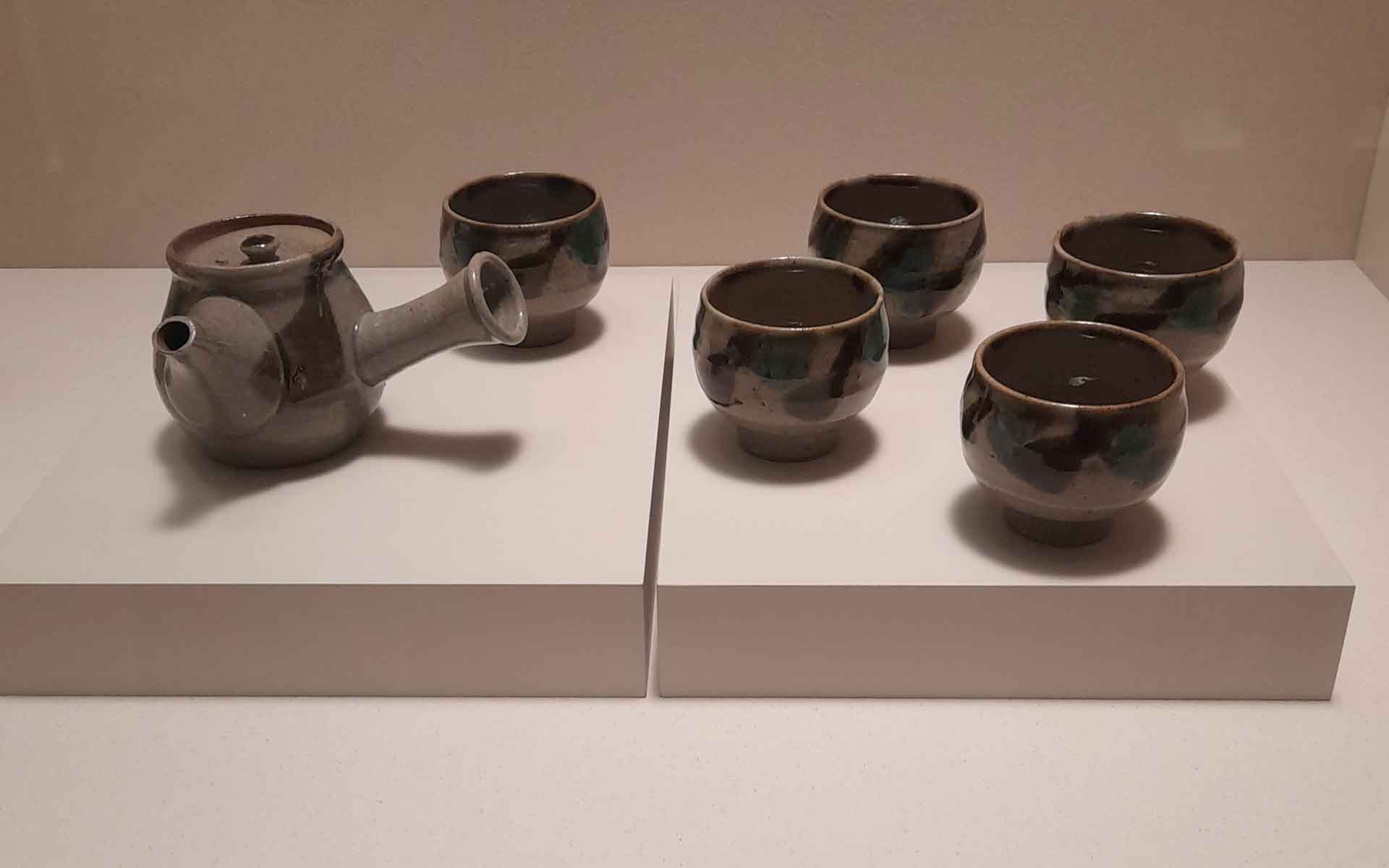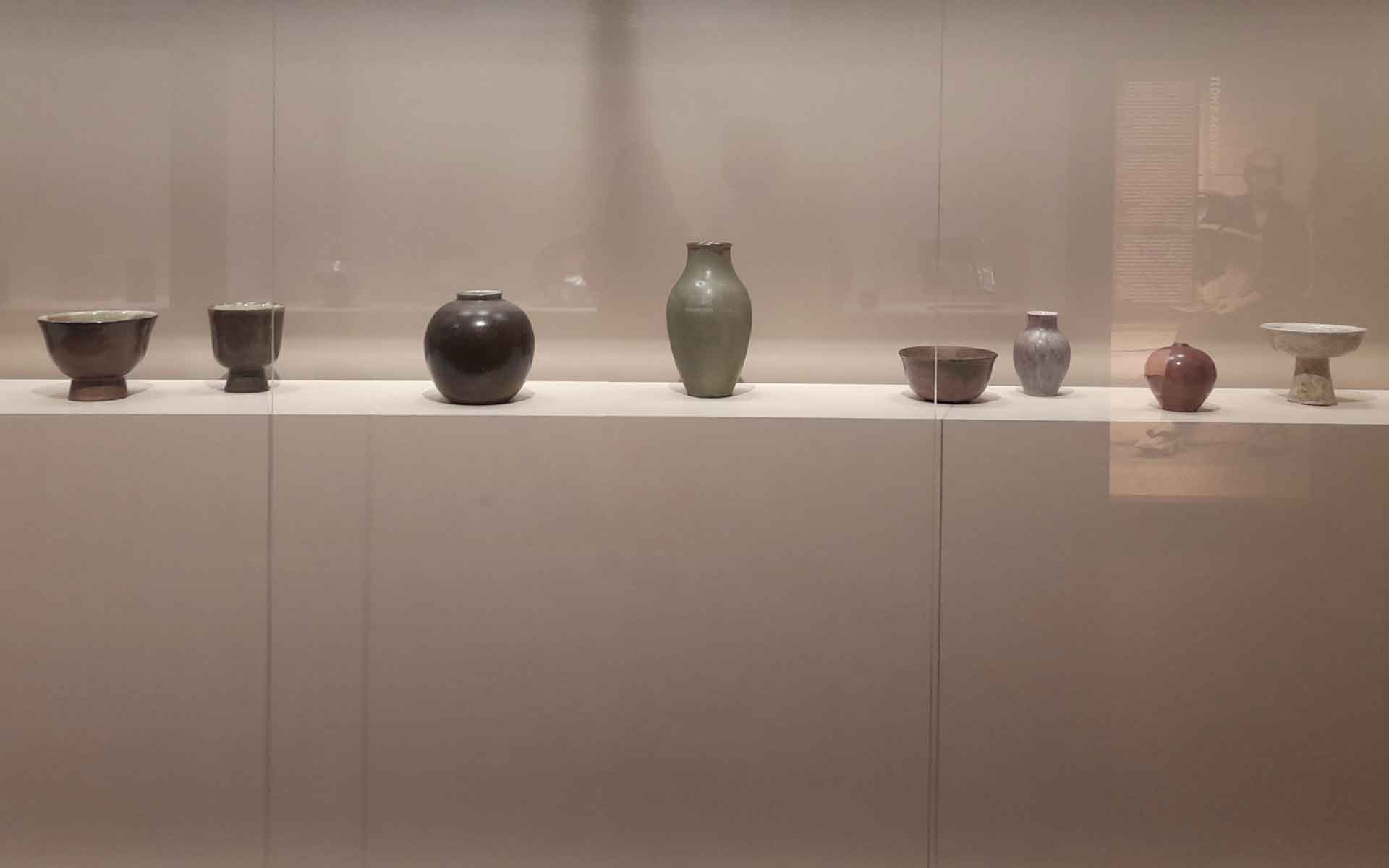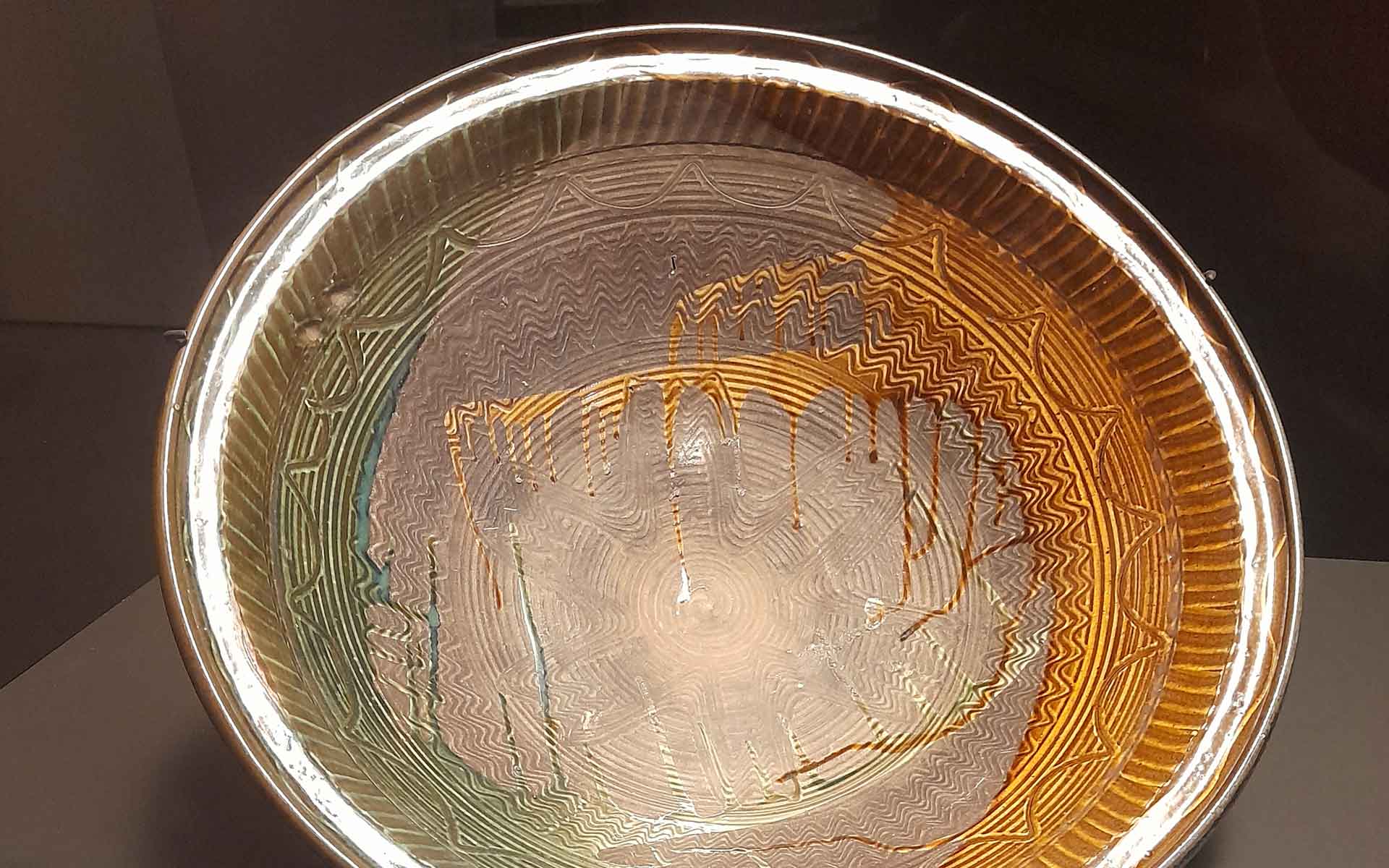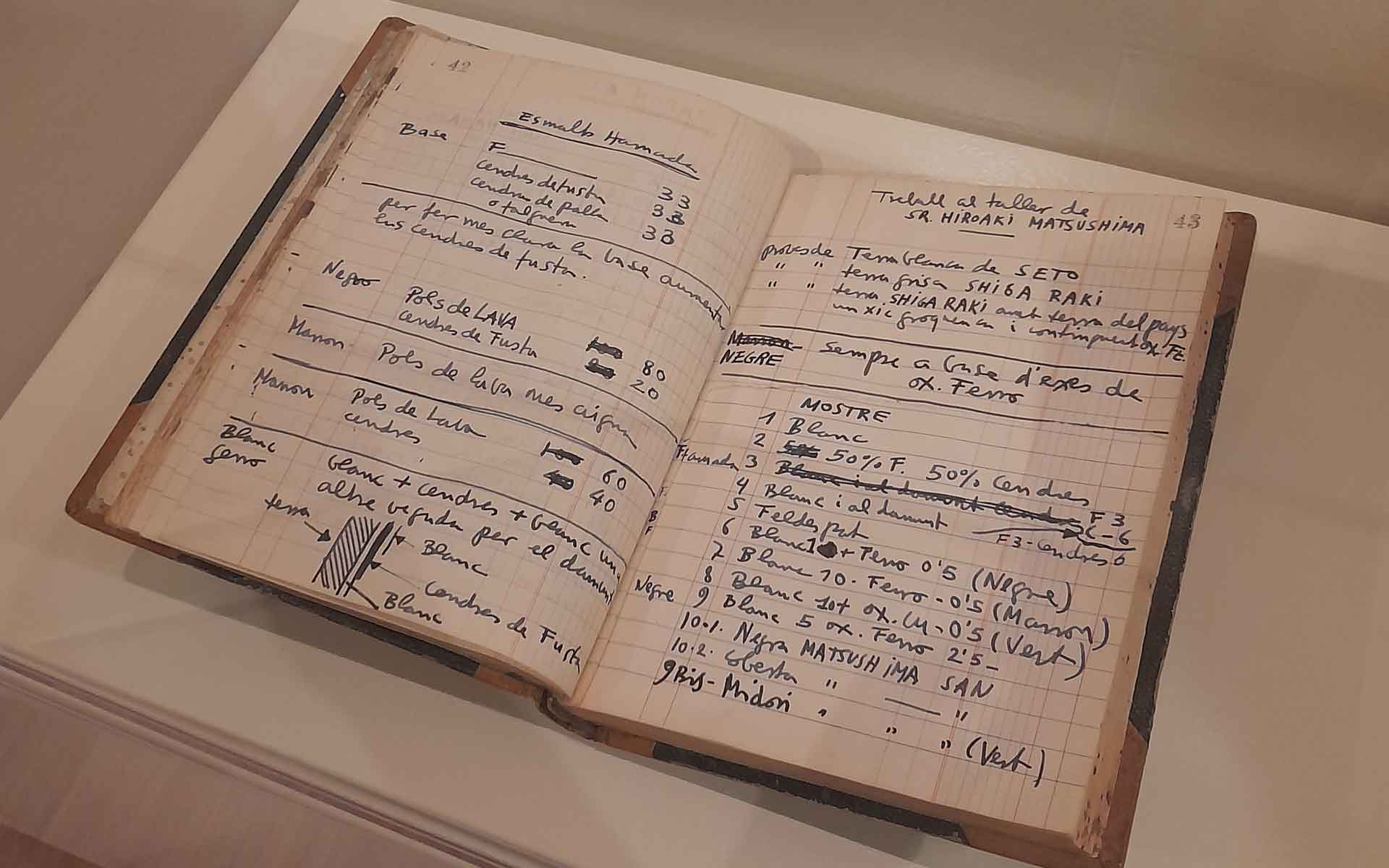
30 Sep The Colours of Fire: Hamada & Artigas
The Colours of Fire: Hamada & Artigas is an exhibition at Museu Nacional D’Art de Catalunya, (MNAC) explores the ceramics of two famous artists Josep Llorens Artigas (1892-1980) from Catalonia, and Hamada Shōji (1894-1978) from Japan. The exhibition presents more than 100 of the works of these two great artists who developed a close relationship after they met for the first time in England in 1952. If you haven’t yet had the chance to visit this stunning exhibition, make sure to pay a visit before 3rd October.
Before I saw The Colours of Fire, I had very little knowledge of Artigas or Hamada, yet I left the museum feeling like I myself had been dipped into two different worlds of ceramics, emerging with new inspiration and understanding of these cultures. I learnt that Hamada was one of the founders of the mingei movement: the mingei movement was developed in Japan in the mid 1920s by philosopher Yanagi Sōetsu. The name means “crafts of the people” and emerges from the philosophy that beauty can be found in everyday objects that are made by nameless crafts people. To learn more about mingei, there is a wonderful book entitled “The Beauty of Everyday Things’ by Yanagi Sōetsu which explores the concept of folk craft and other Japanese art forms.
Hamada Shoji is considered a national treasure in Japan, awarded a medal of honour praised for his lifetime dedication to pottery, reviving some of the fundamental values of Japanese ceramics in the western landscape. On the other hand, Josep Llorens Artigas, born in Barcelona, studied art in France, becoming friends with other renowned artists such as Pablo Picasso and Georges Braque. In the early 1950s Artigas worked closely with Joan Miró. The Colours of Fire exhibition opens the audience to the wider context of artists who worked between Europe and Japan, uncovering the journeys that were undertaken from West to East and back again. The talents of Shoji and Artigas are displayed among those of Joan Gardy Artigas, Joan Miró and Eudald Serra.
As you first enter into the exhibition, you see a large projection of Hamada writing Japanese script on white bowls in glaze, using a Japanese brush, it soon becomes mesmeric, his precision and accuracy tells us that he is a master of this practise. Watching video footage of an artist at work is incredibly humbling and inspiring, and I feel we don’t see enough of the process in today’s art world. We tend to await the finished piece with eagerness, yet, by watching the magic in action, the viewer gains a truer sense of how it was made and finding new appreciation.
The craftsmanship and techniques on display are wonderful, showcasing everyday objects of bowls, plates and tea sets, decorated with vibrant and active glazes. There is even a handwritten notebook on display with a page open on ‘Esmalts Hamada’, listing various recipes for glazes. I found the inclusion of this piece very special, giving the audience a glimpse into the calculated process of glaze making.
The Colours of Fire exhibition inspires the modern potter to find a sense of community, to collaborate with fellow artists, form their own projects, styles, philosophies, and perhaps travel to foreign countries to discover creative figures in history, breathing life into past creative movements that are still relevant to the society we live in today.
137° Ceramic Art Studio runs ongoing weekly ceramic classes that practise the art of wheel throwing, handbuilding, finishing and decoration techniques, in which we explore some of the Japanese methods of applying glaze. You can view the busy weekly schedule here.
Written by Freya Saleh





